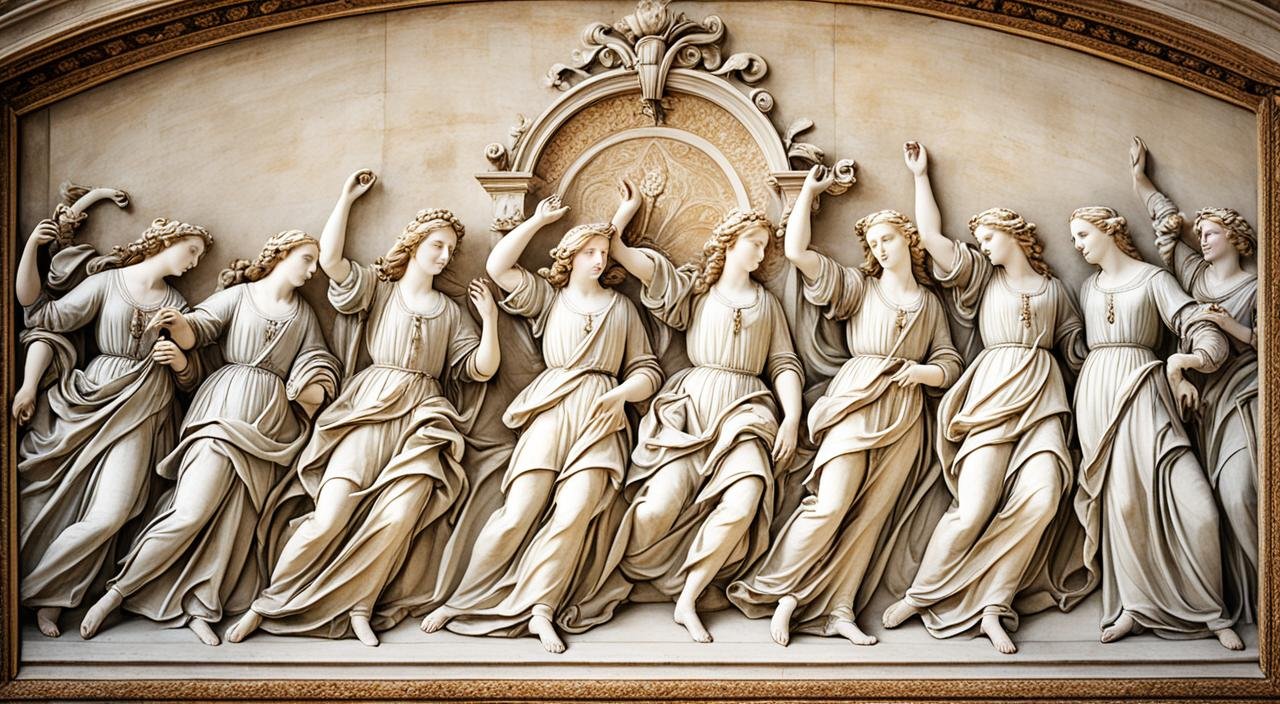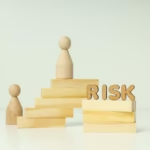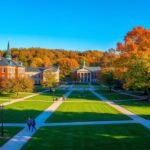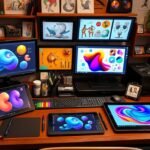The Renaissance was a key time in European history. It saw a big increase in art, culture, and learning. This era, known as the “Rebirth,” brought back classical ideals and focused on humanism. It also saw a huge leap in creativity that changed art forever.
Renaissance art was a big step in visual art’s evolution. Artists aimed to show the human experience more realistically and emotionally. They wanted to capture the true essence of being human.
Rich merchants, nobles, and the Church helped Renaissance art grow. They supported artists, letting them be creative. This led to the creation of famous and influential art pieces. Humanism, which valued individual potential and dignity, was key in Renaissance art. Artists worked hard to show the human form and feelings deeply and accurately.
Key Takeaways
- The Renaissance was a pivotal period in European history marked by a profound transformation in art, culture, and intellectual pursuits.
- Renaissance art represented a turning point in the evolution of artistic expression, characterized by a revival of classical ideals and a focus on humanism.
- Patronage from wealthy merchants, nobles, and the Church played a vital role in fostering the flourishing of Renaissance art.
- Humanism, which celebrated the potential and dignity of the individual, was at the core of Renaissance art, as artists sought to capture the essence of the human experience.
- The Renaissance era witnessed the creation of some of the most iconic and influential works of art in history.
The Renaissance: Rebirth of Art and Culture
The Renaissance was a key time in European history. It brought about a big change in culture and thought. People started to look at the art, literature, and philosophy of ancient times again. This led to a new focus on classical ideals and away from medieval strictness.
This era was full of exploration, innovation, and creativity. It helped bring about big changes in many areas. From art and architecture to science and technology, progress was made.
Also Read: Securing Success: The Critical Role Of Key Person Insurance
The Significance of the Renaissance Period
The Renaissance changed Europe’s cultural and intellectual scene deeply. It lasted for many centuries and brought back classical learning. People became more interested in the world and human life.
During this time, amazing art, literature, and philosophy emerged. These works still move and inspire people all over the world.
The Rise of Humanism and Classical Influences
Humanism became a big part of the Renaissance. It believed in the value and potential of every person. Scholars tried to mix ancient Greek and Roman thought with Christian beliefs. This led to a new view of what it means to be human.
This idea changed Renaissance art. Artists aimed to show the deep feelings and beauty of people. They looked to ancient Greece and Rome for inspiration.
Also Read: Protect And Grow: The Dual Benefits Of Universal Life Insurance
Classical antiquity’s impact is clear in Renaissance art and architecture. You can see Greek and Roman styles in many works. This focus on ancient art and ideas was a big change from the past. It helped start a cultural and intellectual movement that changed European history.
renaissance art: Masterpieces of a Golden Age

The Renaissance was a time of great artistic brilliance. It saw the creation of iconic works that changed art history. Artists focused on realism and the human form, making their works stand out.
Iconic Renaissance Artists and Their Works
Artists like Leonardo da Vinci, Michelangelo, Raphael, and Sandro Botticelli became famous for their skills. They captured the human experience in their art. Works like the Sistine Chapel ceiling and the “Mona Lisa” still amaze and inspire us today.
Leonardo da Vinci was a true “Renaissance man.” He painted, sculpted, and invented, showing off realism and emotion in his art. Michelangelo was a master sculptor, known for “David” and the Sistine Chapel ceiling. Raphael’s “The School of Athens” showed his skill in perspective and human figures. Sandro Botticelli’s paintings, like “The Birth of Venus,” captured the beauty of the Renaissance.
| Artist | Masterpiece | Medium | Key Characteristics |
|---|---|---|---|
| Leonardo da Vinci | Mona Lisa | Oil painting | Realism, perspective, human emotion |
| Michelangelo | Ceiling of the Sistine Chapel | Fresco | Sculptural genius, human form |
| Raphael | The School of Athens | Fresco | Graceful and harmonious compositions, perspective, human forms |
| Sandro Botticelli | The Birth of Venus | Tempera painting | Delicate and poetic, grace and beauty |
These artists’ works still move and inspire us today. They show the brilliance and innovation of the Renaissance.
Also Read: Beyond The Canvas: Exploring Digital Art Innovations
Celestial Imagery: A Cosmic Inspiration

The art of the Renaissance was deeply influenced by the stars and planets. Artists of that time were drawn to the cosmos. They added celestial motifs and symbolic representations to their work. They showed the beauty of constellations and the mysteries of planetary alignments on their canvases.
This love for the stars and planets added deep meaning to their art. It showed how much they understood the universe and our place in it. The Renaissance artists mixed science, spirituality, and artistic expression. They created iconographic masterpieces that celebrated the mysteries of the cosmos.
The Renaissance era was full of artistic exploration of the heavens. From the stunning celestial imagery in grand cathedrals to the astronomical symbols in noble palaces, the era was a time of great creativity. This cosmic fascination inspired both the Renaissance artists and the public. It turned the celestial realm into a source of endless artistic inspiration.
Also Read: What Is Cash Value Life Insurance?
The Renaissance’s celestial imagery shows how deeply connected they were to the cosmos. This legacy still inspires artists, scholars, and dreamers today. The celestial realm was a true source of cosmic inspiration for the artistic genius of the Renaissance.
Patrons and Patronage: Fuel for Artistic Genius
The Renaissance was a time of great art and powerful patrons. Wealthy merchants and nobles played a big role in the era’s artistic success. They saw art as a way to show off their wealth and status.
The Role of Wealthy Merchants and Nobility
These patrons supported the best artists with money and freedom to create. The Medici family in Florence was key, backing artists like Michelangelo, Raphael, and Botticelli.
This partnership led to the creation of famous Renaissance art. Wealthy people and nobles used art to show their power and influence. Their support helped make the Renaissance a time of great artistic expression.
| Patron | Supported Artists | Notable Commissions |
|---|---|---|
| Medici Family | Michelangelo, Raphael, Botticelli | Sistine Chapel, Uffizi Gallery |
| Gonzaga Family | Mantegna, Rubens | Ducal Palace in Mantua |
| Borgia Family | Pinturicchio, Raphael | Apartments of Borgia in the Vatican |
Wealthy merchants and nobles played a big part in the Renaissance art scene. They gave artists the resources and freedom they needed. This led to the creation of some of the most famous art in history.
Techniques and Innovations in Renaissance Art

The Renaissance was a time of great change in art. Artists explored new techniques that changed how we see art. They mastered linear perspective, a method that made paintings look real and deep.
Linear Perspective and Realism in Painting
Artists like Leonardo da Vinci and Raphael used linear perspective to make their paintings look real. They paid close attention to details and the human body. This made their art more precise and touching.
They focused on showing the human experience in a new way. Their paintings became famous for their realism.
Also Read: Avila University: Where Your Dreams And Goals Align
Sculpture and the Art of Contrapposto
The Renaissance also brought back old sculpting techniques, like contrapposto. This method made the human figure look natural and lively. It was first used by ancient Greeks and later by Renaissance artists.
Artists like Michelangelo used contrapposto in his famous works, like the “David”. This added movement and feeling to his sculptures.
These new techniques changed Renaissance art and influenced future art movements. The use of linear perspective and classical sculpting made the Renaissance a time of great creativity.
The Renaissance Renaissance: A Resurgence Within

The Renaissance era was a key time in European history. It was marked by a big rebirth in art, culture, and thought. This period had a lesser-known chapter, the “Renaissance Renaissance.” It happened in the late 15th and early 16th centuries. This chapter brought new innovation and refinement to an already vibrant era.
The Renaissance Renaissance saw a big interest in classical antiquity. Scholars and artists studied and copied ancient art and styles. Humanism grew stronger, focusing on critical thinking, education, and seeking knowledge. This led to a new group of writers, philosophers, and scientists. They expanded human knowledge and shaped modern thought.
Also, the Renaissance Renaissance made artists like Michelangelo and Raphael take artistic expression to new levels. This time within the Renaissance era changed Europe’s cultural, intellectual, and artistic scene forever.
“The Renaissance Renaissance was a testament to the enduring power of human creativity and the relentless pursuit of knowledge.”
The Renaissance Renaissance focused on classical influences, scientific discoveries, and technological advancements. It expanded artistic expression and gender dynamics. This shaped cultural, intellectual, and religious transformations that lasted for centuries.
The Northern Renaissance: Artistic Expression Beyond Italy

The Northern Renaissance art movement is just as important as the Italian Renaissance. It happened in places like the Netherlands, Flanders, and Germany. This movement had its own special styles and ways of doing things.
Characteristics of Northern Renaissance Art
Northern Renaissance artists were experts in oil painting. This let them add lots of detail and realism to their art. They kept religious themes in their work but also looked at secular subjects. They used symbolism and focused on real life.
Artists like Jan van Eyck and Albrecht Dürer were famous for their skills. They made art that was full of detail and showed their unique view of the world. Their art included beautiful religious panels and portraits that really showed who they were painting.
The Northern Renaissance added a special touch to the art world of the Renaissance. Its artists brought a new way of seeing things. This added to the rich culture of the time, making the art scene even more vibrant.
Also Read: The nature, causes, and uses of prehistoric art
Conclusion: The Enduring Legacy of Renaissance Art
Renaissance art has had a lasting impact that goes beyond its time. It changed the course of Western art for centuries. New techniques like perspective and naturalism changed how art was made. This laid the groundwork for later art styles, including Baroque, Neoclassical, and modern art.
The Renaissance also made artists see themselves as unique creators and visionaries. This idea spread to later art movements like Romantic and Impressionist. It changed how artists and art lovers see art.
The Renaissance sparked a big cultural and intellectual awakening in Europe. It led to more literature, music, and scientific discoveries. The enduring legacy of Renaissance art is seen in how it still affects artists and art lovers today.
The artistic genius and humanism of the Renaissance have deeply influenced art. From beautiful celestial imagery to new techniques and innovations, the Renaissance has shaped art and culture. It has made a lasting impact on Western art.
FAQs
Q: What are the main characteristics of Renaissance art?
A: The characteristics of Renaissance art include a focus on realism, perspective, human emotion, and the use of classical themes from ancient Greece and Rome. Artists aimed to create lifelike figures and incorporated techniques such as chiaroscuro and sfumato to enhance depth.
Q: How does early Renaissance art differ from high Renaissance art?
A: Early Renaissance art, which emerged in the late 13th and early 14th centuries, focused on naturalism and perspective but still retained some medieval elements. In contrast, high Renaissance art, which flourished between 1490 and 1527, emphasized harmony, balance, and the idealization of the human form, with significant contributions from artists like da Vinci and Michelangelo.
Q: Can you provide examples of famous Renaissance paintings?
A: Some great works of art from the Renaissance period include Leonardo da Vinci’s “Mona Lisa,” Michelangelo’s “The Creation of Adam” in the Sistine Chapel, and Raphael’s “The School of Athens.” These masterpieces exemplify the high renaissance style and showcase the talent of important artists of the time.
Q: What role did the Renaissance man play in the art movements of the period?
A: The concept of the Renaissance man refers to individuals who excelled in multiple fields, including the arts and sciences. Many Italian Renaissance artists, such as Leonardo da Vinci, embodied this ideal by contributing not only to painting and sculpture but also to inventions, anatomy, and philosophy, thus influencing the spirit of the Renaissance.
Q: What is the significance of baroque art in relation to Renaissance art?
A: Baroque art emerged after the Renaissance and is characterized by dramatic expression, movement, and clear detail. While Renaissance art focused on harmony and proportion, baroque art moved towards emotional intensity and grandeur, representing a shift in artistic expression and technique.
Q: How did the Renaissance period in Europe influence modern art?
A: The Renaissance period laid the groundwork for modern art by revitalizing interest in classical antiquity and humanism. The techniques and theories developed during this time, such as linear perspective and the study of anatomy, paved the way for future art movements and the evolution of painting and sculpture.
Q: What are some notable Italian artists from the early Renaissance?
A: Notable artists of the early Renaissance include Giotto, who is known for his groundbreaking frescoes, and Donatello, who made significant contributions to sculpture. Their works marked a transition from medieval art to a new style that emphasized realism and human emotion.
Q: How did Renaissance art depict the human experience?
A: Renaissance art depicted the human experience by focusing on the individual, showcasing emotions, and exploring themes of beauty, nature, and mythology. This shift towards humanism allowed artists to create more relatable and expressive figures, reflecting the complexities of life during the Renaissance period.
Q: What is the legacy of Renaissance art in world history?
A: The legacy of Renaissance art in world history is profound, as it revolutionized artistic practices and inspired countless movements that followed. The emphasis on realism, perspective, and the study of classical forms influenced European art for centuries and continues to resonate in modern artistic endeavors.
Source Links
- https://journals.cosmic.edu.pk/CJAH/article/download/88/88/97
- https://webpages.cs.luc.edu/~dennis/106/106-Bkgr/12-Renaissance
- https://newworlds.com/renaissance-art-rebirth-of-creativity-and-humanism/?srsltid=AfmBOooT99GpBoHBGw9zpUYvG2afWSBHunb8EMs6cdDWPVgmQ6qVapyH





